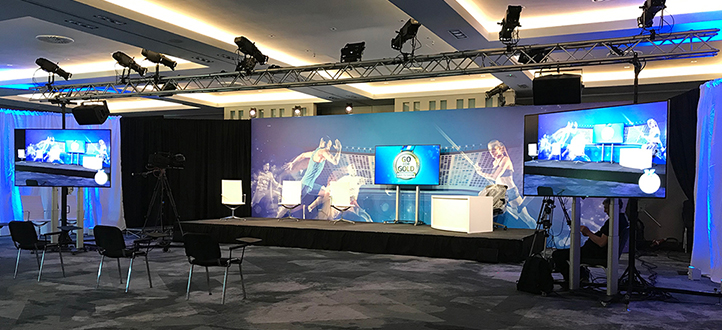
When it pertains to light-emitting diode walls, a key most elements to take into account is pixel pitch. Pixel pitch is defined as the space between the centers of two adjacent pixels on an light-emitting diode display. This metric is commonly expressed in mm. Understanding pixel pitch is crucial because it explicitly influences the resolution and sharpness of the images displayed. A reduced pixel pitch means that the pixels are nearer together, resulting to a greater resolution, while a bigger pixel pitch yields in a diminished resolution. Thus, selecting the right pixel pitch is essential for achieving peak LED wall functionality.
The choice of pixel pitch often depends on the sight distance. For example, if the LED wall is meant to be seen from a distance, a larger pixel pitch may be appropriate. This is due to the fact that the human eye cannot easily discern individual pixels when they are farther away. On the contrary hand, if the wall will be observed up nearby, a smaller pixel pitch is necessary. In scenarios such as indoor events, where attendees are usually closer to the screen, a reduced pixel pitch will offer a crisper and more distinct image. Therefore, understanding how viewing distance affects pixel pitch is critical to making an informed decision.
Another crucial factor is the planned use of the LED wall. Different applications, such as promotion, concerts, or conference meetings, may necessitate different pixel pitches. For instance, an light-emitting diode wall used for promotional purposes in a shopping center may benefit from a pixel pitch that facilitates vibrant colors and high detail so that it grabs the focus of bystander browse this site shoppers. Conversely, an external LED wall used at a concert may prioritize brightness and visibility over resolution, allowing for a larger pixel pitch. Therefore, the specific context in which an light-emitting diode wall will be utilized is crucial for establishing the appropriate pixel pitch.
Cost is also a major factor when choosing pixel pitch. Typically, LED displays with smaller pixel pitches often to be more costly due to the higher density of pixels and the sophisticated technology required for production. Although it may be tempting to choose a high-resolution display with a reduced pixel pitch, budget constraints often necessitate a balance between quality and cost. Organizations should evaluate their needs and decide how much they are prepared to spend in an light-emitting diode wall, ensuring that the pixel pitch matches with their financial capabilities while still satisfying functional expectations.
Finally, it is crucial to take into account the maintenance and longevity of the LED wall when selecting pixel pitch. Displays with smaller pixel pitches can sometimes be more fragile and may need more meticulous handling and maintenance. Regular upkeep is required to ensure that the display functions effectively over time. Understanding the maintenance requirements and potential challenges associated with different pixel pitches can help organizations make a more informed decision. By taking into account all these elements, including sight distance, planned use, budget, and maintenance, individuals can select the perfect pixel pitch for optimal LED wall performance.